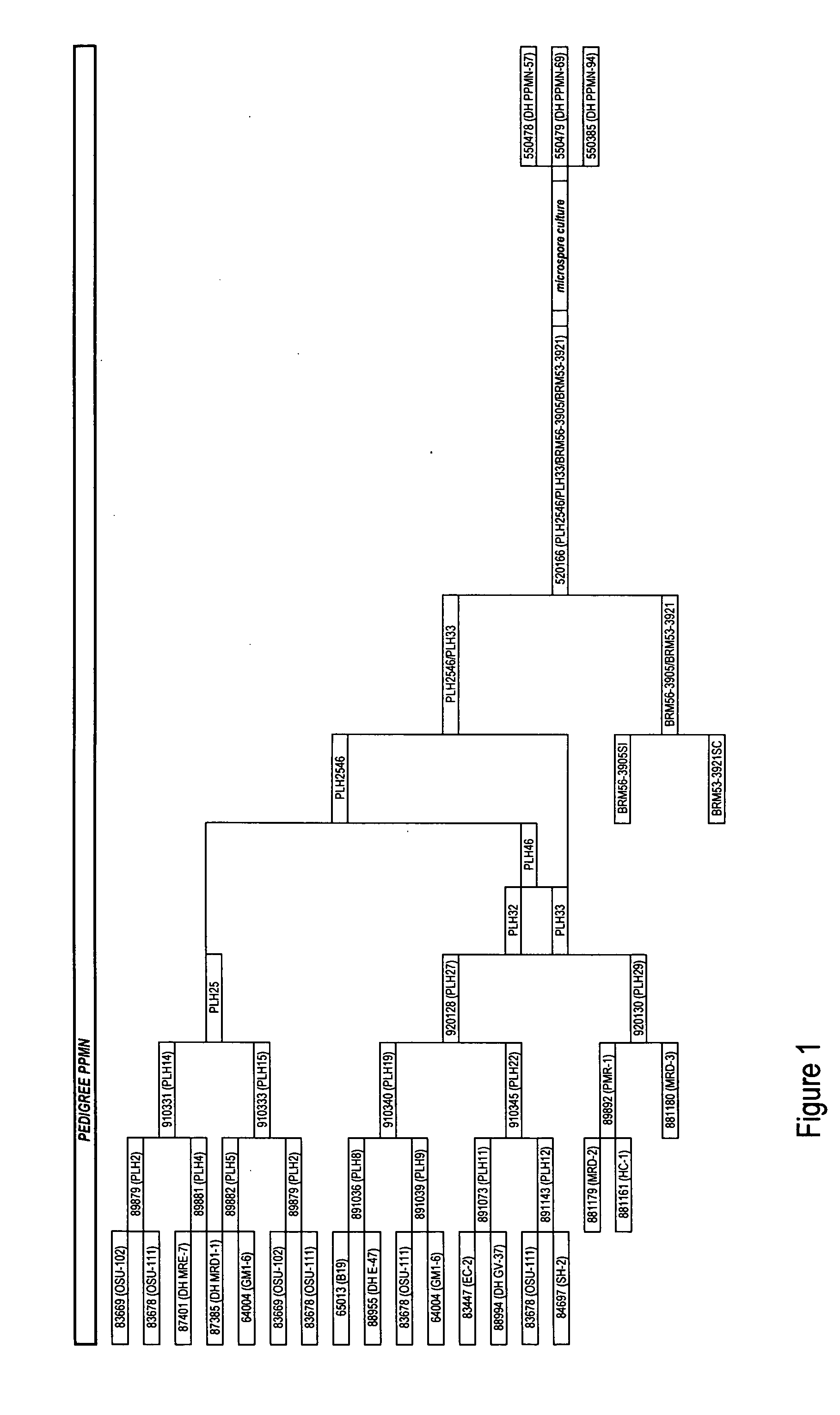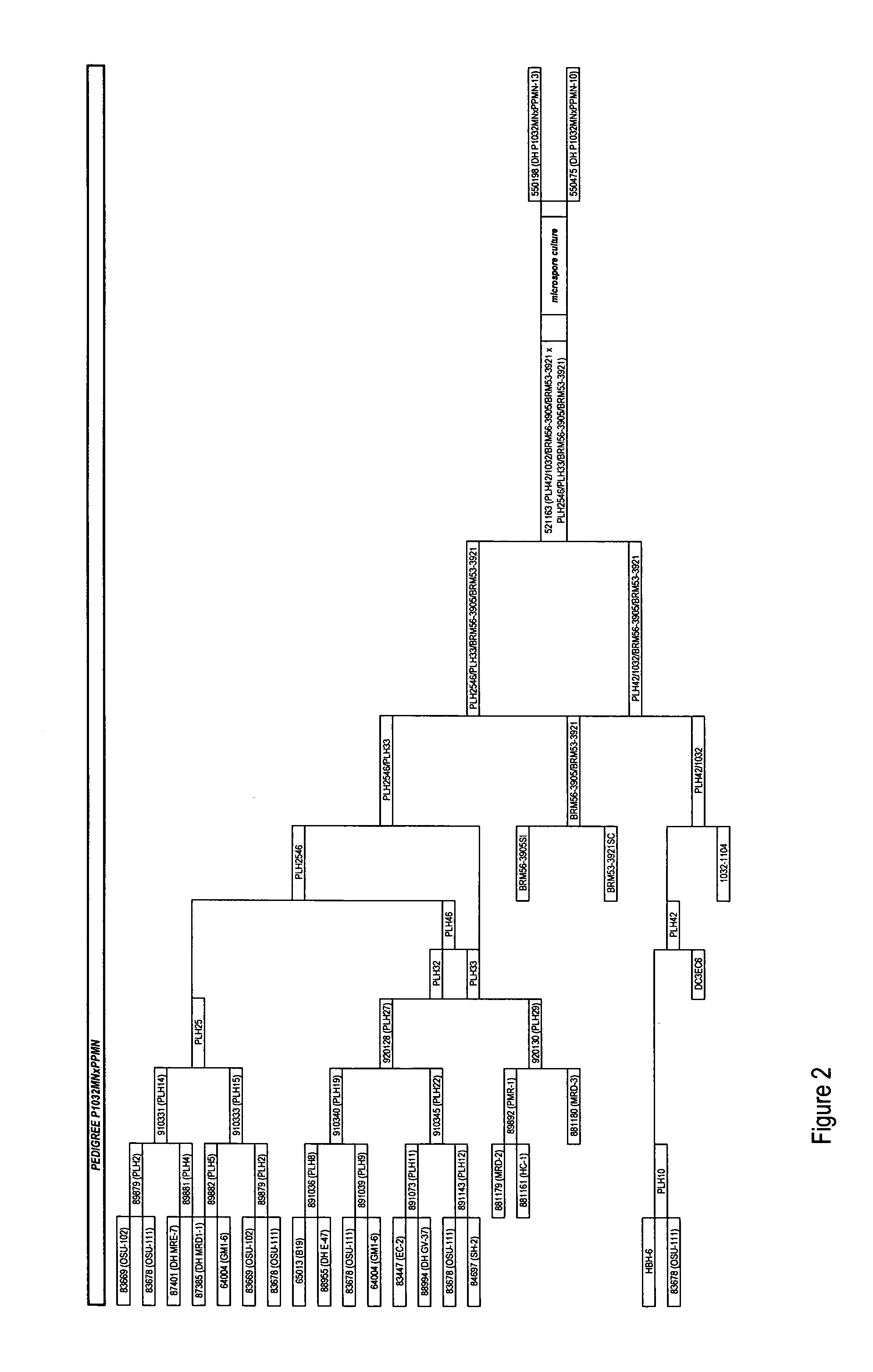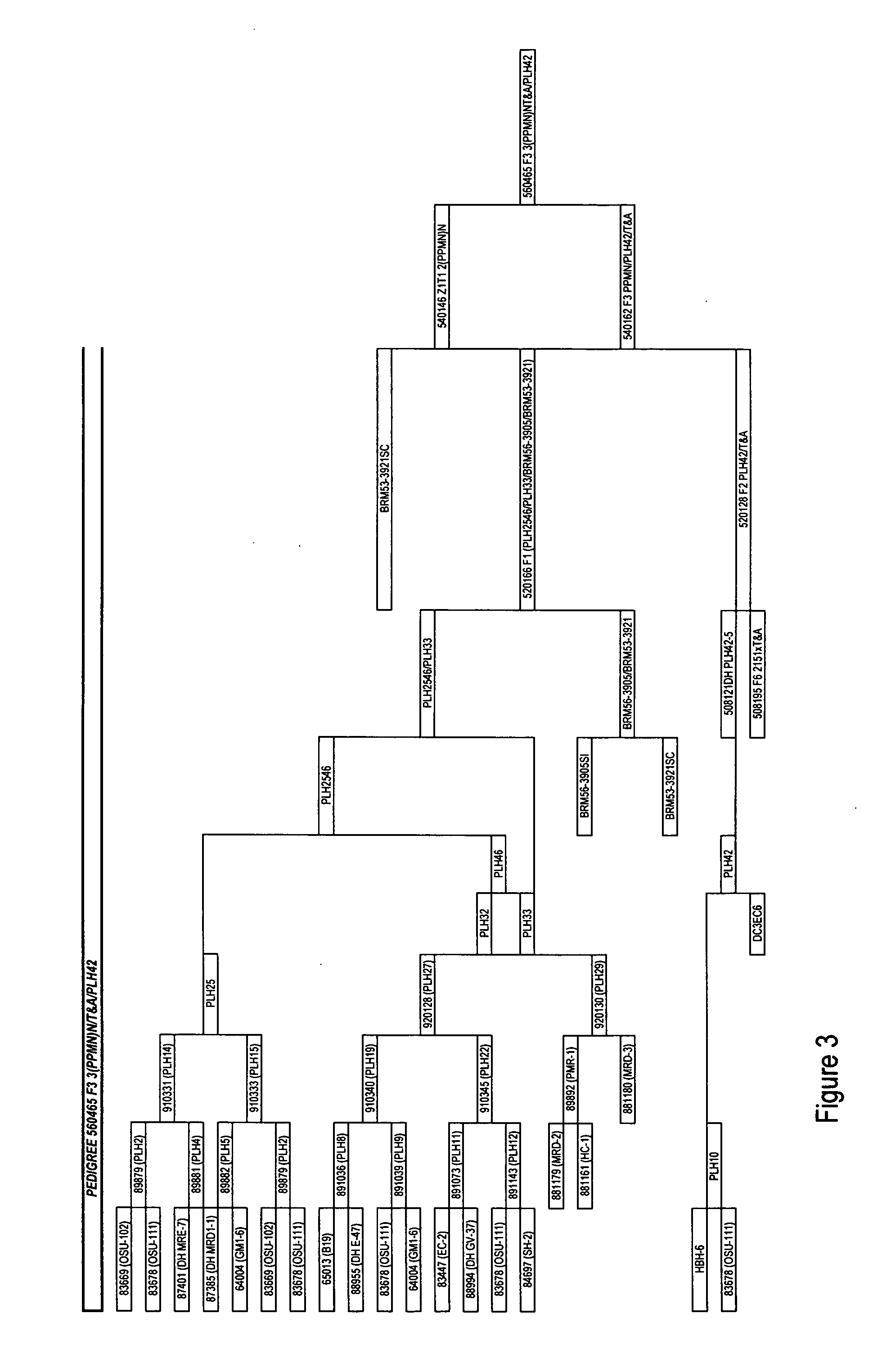Broccoli type having curds with detached florets
a broccoli type and curd technology, applied in the field of broccoli type, can solve the problems of incomplete mechanical harvesting, complex arrangement of taxa in question, and large yellowing of individual florets at the center of the crown
- Summary
- Abstract
- Description
- Claims
- Application Information
AI Technical Summary
Benefits of technology
Problems solved by technology
Method used
Image
Examples
example 1
Development of Plant with Curds Having Detached Florets
[0113] Both proprietary and public research lines were available having an exerted curd or raised head (RH) trait. For instance, the Oregon State University (OSU) broccoli breeding program had lines with a moderate exerted head, and several accessions were obtained in the 1980's from the OSU breeding program. Some of these lines were designated as OSU-102 and OSU-111. These accessions produced poor head size, poor head quality, generally, and leaves on the stem just below the head which rendered such lines unsuitable as parents for commercially viable hybrids. Selection for better raised head (referred to as ‘RH’) traits and higher internode lengths consistently led to lower head weights. Eventually after multiple rounds of breeding and selection, lines were developed with the RH trait, and compact heavy heads of good quality.
[0114] Proprietary accessions selected at the start of the breeding project were designated DH MRE-7, ...
example 2
Microspore Culture
[0122] Lines 520166 and 521163 were used as the starting material for the microspore culture. Anthers from heterozygous donor plants grown under a 16 h photoperiod at 10-12° C. are used as experimental material. Flower buds of different sizes are harvested and isolated, anthers were squashed and stained with DAPI to determine the stage of meiotic development. Flower buds containing anthers with pollen in late uni-nucleate to early bi-nucleate stage are selected and sterilized by spraying with 96% ethanol, followed by immersion in a 2.6% solution of sodium hypochlorite for 5 min and rinsed three times with sterilized distilled water.
[0123] The sterilized buds are prepared in B5 liquid medium and buds are squashed as described in Fan, Z., Armstrong, K. C. and Keller, W. A., Development of microspores in vivo and in vitro in Brassica napus L., Protoplasma 147, 191-199 (1988). The resulting squashed buds are then filtered through two nylon filters (48 μm, 63 μm ø) an...
example 3
Additional Inbred Broccoli Lines
[0129] Additional inbred broccoli lines are developed from crosses using broccoli line 520166, described above. The pedigree of broccoli line 560465 is provided in FIG. 3.
[0130] Measurements are taken from a commercial crown broccoli hybrid (RS1149, or Tinman), a crown broccoli hybrid line, 550118, and the two detached floret lines, 560465 and 550475. FIG. 4 provides a photograph of several outer florets of commercial broccoli hybrid RS1149, and FIGS. 5 and 6 provide photographs of an intact head, and several severed florets, respectively, of broccoli line 550465. The following data are collected from the broccoli plants and are provided in Table 1 below. The minimum distance of each floret to the nearest floret in the curd (in millimeters); the widest diameter of the floret (in millimeters); the total length of the floret from the crown to the attachment of the floret to the primary stem (in millimeters); the quality rating of each floret (on a sca...
PUM
 Login to View More
Login to View More Abstract
Description
Claims
Application Information
 Login to View More
Login to View More - R&D
- Intellectual Property
- Life Sciences
- Materials
- Tech Scout
- Unparalleled Data Quality
- Higher Quality Content
- 60% Fewer Hallucinations
Browse by: Latest US Patents, China's latest patents, Technical Efficacy Thesaurus, Application Domain, Technology Topic, Popular Technical Reports.
© 2025 PatSnap. All rights reserved.Legal|Privacy policy|Modern Slavery Act Transparency Statement|Sitemap|About US| Contact US: help@patsnap.com



